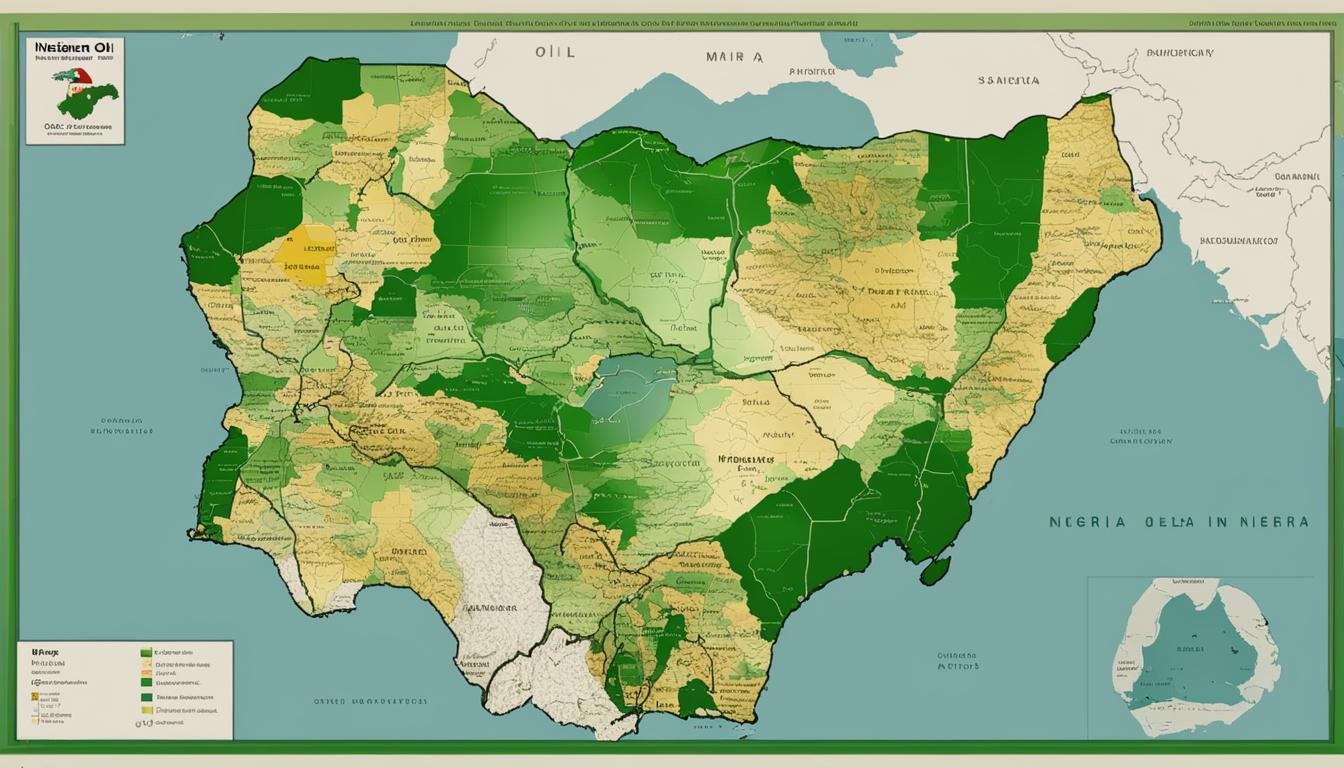Students, parents, and academic institutions need to make informed decisions in today’s competitive higher education landscape. Harnessing the power of data provides valuable insights into enrollment trends, preferences, and the overall dynamics of the college admissions process. This article dives deep into college enrollment statistics, presenting an in-depth analysis of global statistics, college enrollment trends, and more.
College Enrollment Statistics
Key Takeaways
- The number of students pursuing tertiary education outside of their home country tripled within 2 decades.
- There is a significant disparity in college enrollment between young men and women, with women showing a higher likelihood of being enrolled in university and earning a four-year degree.
- Harvard University has the lowest acceptance rate among Ivy League colleges at 4.0%.
- Practical and occupationally-oriented majors, such as Health Professions, Computer/Information Sciences, Engineering, and Business, have experienced significant growth in enrollment over the past decade.
- Various factors, including a shift in students’ career aspirations, concerns about job prospects, and a lack of understanding or appreciation for the value of liberal arts majors in the evolving job market, contribute to the decline in enrollment.
Key Stats
- According to a report by UNESCO, the number of students pursuing tertiary education doubled within the last two decades.
- According to a report by the World Bank, in 2020, the gross enrollment ratio for female students in colleges and higher education was around 84%, while for male students, it was 67%.
- A Statista report in 2023 revealed that Cornell University had the largest enrollment, with 3,533 students among the Ivy League institutions in the fall of 2022.
- A Forbes article from 2022 reported a significant increase in awarded Bachelor’s degrees in the field of Health Professions over a ten-year period, with 127,659 degrees added from 2009-10 to 2019-2020.
- A Forbes article stated that Education had the largest decline in awarded baccalaureate degrees over a ten-year period, with 16,230 fewer graduates from 2009-10 to 2019-2020.
Global Statistics on College Enrollment
In this exploration of the global landscape of college enrollment, we will delve into the latest statistics and trends worldwide.
UNESCO, the United Nations Educational, Scientific and Cultural Organization, is a specialized agency of the United Nations that aims to promote peace, sustainable development, and intercultural dialogue through education, science, culture, and communication. It published a report in 2020 on higher education.
According to the report, the number of students pursuing tertiary education doubled within the last two decades. Furthermore, the report also revealed that the number of students who pursued their tertiary education outside of their home country also tripled from 2000 to 2020.
We will further examine the enrollment statistics based on region and gender to gain insights into the current state of college enrollment worldwide:
Regional Statistics
regions tackled in this article are America, Europe, Asia, and Africa.
1. America
Deloitte published an article on college enrollments in the United States of America. According to the 2023 article, enrollment rates in higher education have consistently been declining. It stated that the United States had 18.1 million students enrolled from 2010 to 2011. Furthermore, it mentioned that enrollment has steadily decreased since then. The first academic year of the pandemic further accelerated this decline, leading to a significant drop in enrollment.
The number of undergraduate students has fallen to almost 15.1 million by fall 2022. This meant about 1.23 million undergraduates were absent from American colleges and universities compared to 2020. That shows a decrease in overall enrollment by 4%. The article further commented that the decline in enrollment suggested that the traditional high school-to-college path for many years may have peaked. And that the market for students transitioning from high school to college is changing as college enrollment growth has slowed or reversed in recent years.
When exploring demographics, the article stated that women outpace men regarding the average years spent in school since the 1980s. There has been a noticeable trend in recent decades of men pursuing a college degree. It elaborated that 56% of undergraduate enrolment in US universities comprised female students, making them the majority. The article raised concerns about the drop in male enrollment in higher education. It predicted a negative influence on working-age men’s employment rates, which could have economic effects.
Deloitte is a global professional services firm that provides clients with a wide range of services, including audit and assurance, consulting, tax, and risk and financial advisory.
2. Asia
A report by The World Bank was published on tertiary school enrollment. The World Bank defines tertiary school enrollment as education that requires, at minimum, the successful completion of secondary education. It generally includes college, university, and vocational education.
The gross enrollment ratio (GER) represents the proportion of the population enrolled in a particular level of education. It is calculated by dividing the number of students enrolled in tertiary education regardless of age by the population of the age group which officially corresponds to tertiary education and multiplying by 100. South Asia’s GER in 2020 was 26%, a per cent higher than the previous year.
The report gave further statistics on the countries within South Asia and their values. The countries and their GER in 2020 are mentioned below:
- Afghanistan had a GER of 11%.
- Bangladesh had a GER of 24%.
- Bhutan had a GER of 17%.
- India’s GER was 29%.
- Nepal’s GER was 14%.
- Sri Lanka had a GER of 22%.
3. Africa
The Word Bank published a report on Sub-Saharan Africa using the same methodology. The gross enrollment ratio of tertiary schooling in Sub-Saharan Africa 2020 was 10%. It also specified countries and their GERs in 2020:
- Bensin had a GER of 11%.
- Botswana had a GER of 25%.
- Cote d’Ivoire’s GER was 10%.
- Ghana’s GER was 19%.
4. Europe
The World Bank also published a report on the European Union’s gross enrollment ratio in tertiary education. The European Union is a group of 27 European countries. The European Union had a GER of 75% in 2020. They also specified countries and their GERs in tertiary education in 2020. They are listed below:
- Austria’s GER was 87%.
- Belgium’s GER was 81%.
- Bulgaria had a GER of 75%.
- Croatia had a GER of 68%.
- Cyprus had a significant GER of 93%.
- Denmark had a GER of 83%.
- Germany had a GER of 73%.
- France had a GER of 69%.
Which Countries Have The Highest and Lowest College Enrollment?
The Global Economy published a report on tertiary school enrollment. While tertiary sector schooling may also include vocational centers, we will use these statistics as a proxy. The report provided tertiary school enrollments as a percentage of all eligible students in 2020. In 2020, Greece was globally ranked number one. It had the highest tertiary school enrollment rate at 150.88%. Following Greece, the top 3 countries with the highest enrollment and their values were:
- Turkey – 117.11%
- Australia – 114.19%
- Macao – 113.09%
The Global Economy is a platform providing insights into economic data for investors, academics, and researchers.
Some insight can be found on Greece’s trends from an article. A 2021 article by the International Trade Administration states Greece offers their students free education, which invites more students to get their higher education. They have 25 institutes which are divided between universities and technical institutes. These institutes also provide diploma degrees which cut down the total school years for the students.
According to the Global Economy, as mentioned in the earlier report, Nigeria had the lowest value of any other country, with only 4.37% of its eligible children parking in tertiary school enrollment. Nigeria was ranked 113 among all nations. Following Nigeria, the countries with the lowest college enrollments and their values were:
- Burundi – 4.97%
- Madagascar – 5.53%
- Guinea – 5.84%
Following the overall tertiary school enrollment, we will now dive into the country with the highest and lowest college enrollments in each region:
1. Europe
As mentioned above, Greece is ranked highest in college enrollments in the world. Thus, in Europe, the country with the highest college enrollment in 2020 was Greece, at 150.88%.
On the other hand, the country with the lowest college enrollment in Europe was Luxembourg. The country had 19.2% of its students enrolled in college in 2020
2. Asia
Asia’s country with the highest college enrollment in 2020 was Macao. Macao had 113.09% of its students enrolled in college. The Asian country with the lowest enrollment rate was Ivory Coast at a percentage of 19.91.
3. Australia
Australia had the highest college enrollment within the region of Australia. Its college enrollment was 114.19% in 2020. The report did not provide other Australian countries.
4. Africa
Alegria had the highest college enrollment in Africa at a rate of 52.50%. In contrast, Nigeria had the lowest college enrollment at 4.37%.
5. North America
The country with the highest tertiary school enrollment rate in North America is the United States of America (USA), with a rate of 87.57. While the country with the lowest tertiary school enrollment rate in North America is Canada, with a rate of 79.2%
6. South America
The country with the highest tertiary school enrollment rate in South America in 2020 was Uruguay, with a rate of 67.88. Ecuador had the lowest tertiary school enrollment in South America, at 52.59%.
Gender-Based Differences in Enrollment
There may be a significant disparity in college enrollment among young men and women. According to a post in 2021 by the Pew Research Center, the chance for young women to be enrolled in university as compared to their male correspondents’ numbers is higher. It said that after considering people 25 and above, women showed a higher chance of owning a four-year degree than men. This discrepancy in college degrees becomes even more pronounced while inspecting the age group between 25 to 34.
The Current Population is a survey conducted by the Pew Research Center. The survey analysis revealed many interesting facts, including the fact that 62% of adults aged 25 and above in the US do not hold a four-year college degree.
A new survey by the Center further revealed data on adults not currently enrolled in college and lacking a four-year degree. The study highlighted the reasons behind adults not completing education while demonstrating the various reasons for men’s and women’s decisions.
Financial constraints were a major reason for many individuals not attending or completing college. The Center reported that an estimate of four in ten, about 42%, individuals stated they do not have a bachelor’s degree due to being unable to afford college. On the other hand, 36% of them found it necessary to support their families, thus being unable to complete their degree.
A notable proportion of adults who didn’t complete a four-year college education, roughly three out of ten, highlight their lack of interest as a major factor influencing their decision. Additionally, 23% expressed the belief that further education was unnecessary for their desired job or career. Moreover, around 20% mention that they never even contemplated pursuing a four-year degree. In comparison, a small minority, only 13%, state that their primary reason for not pursuing higher education was the belief that they wouldn’t be accepted into a four-year college.
There is a notable difference between the genders and the factors concerning the decision not to complete college. The study found that men are more likely to decide so on the basis of personal choice. The survey found that almost 34% of men without a bachelor’s degree’s significant reason for not completing college was simply their lack of desire to do so. On the other hand, only a quarter of women shared this sentiment of lacking the desire to pursue higher education. Moreover, when it came to non-college-educated individuals, more men than women found that additional education was unnecessary for their desired job or career, with about 26% of men holding this belief in contrast to 20% of women.
Interestingly, women (44%) are slightly more likely than men (39%) to identify financial constraints as a significant reason for not obtaining a bachelor’s degree. In contrast, both men and women are relatively equally inclined to cite the need to work and support their families as a major obstacle in pursuing higher education.
However, when reporting that they did not consider attending college, men and women had no significant differences in shares. There was no significant gap between men and women who reported they believed they would not be accepted in a four-year college.
According to the stats provided by Statista in 2020 in the US, around 6.6 million college students were male, in contrast to 9.2 million females. Even outside of the United States, Europe has seen a gender gap in education. Statistics from The World Bank show that female enrollment in higher education has increased by 9% in the past 10 years. In the year 2020, the gross total of female students enrolled in colleges and higher education was around 84%, compared to men, which was 67%.
Ivy League Enrollment Trends
Enrollment in Ivy League universities has long been highly sought-after and competitive. These prestigious institutions, including Harvard, Yale, Princeton, Columbia, Cornell, Brown, Dartmouth, and the University of Pennsylvania, consistently attract exceptionally talented and high-achieving students.
In recent years, Ivy League enrollments have witnessed several significant trends. Statista published a report in 2023 on enrollment in Ivy Leagues in the fall of 2022. According to the report, Cornell University had the largest enrollment, with 3,533 students. Following Cornell, Brown University had an enrollment of 3,203 in the fall of 2022. Next, the University of Pennsylvania had enrollments of 2,417 students. Separately from the rest, Dartmouth enrollments 1,228 were from the fall of 2021. The rest of the university enrolments for 2022 are listed below:
- Harvard University, with 1,984 enrollments
- Columbia University, with 1,559 enrollments
- Yale University, with 1,557 enrollments
- Princeton University, with 1500 enrollments
Statista is a leading market and consumer data provider, offering comprehensive and reliable statistics across various industries and topics.
Additionally, there was an article posted by Quad Education on facts about college enrollments in Ivy League. It was published in 2022. It published statistics on the Ivy Leagues mentioned below.
Quad Education is an online platform filled with experts that use data to aid students in getting into their dream universities.
Brown University
The article stated that Brown University witnessed a high number of applications, with a total of 46,568 students vying for admission. However, the university accepted only 2,569 applicants, resulting in a competitive acceptance rate of 5.5%.
Columbia University
Interestingly, 2,358 of the 60,551 undergraduate applications that Columbia University received were accepted, with a 3.9% acceptance rate. The gender split among the students is 50% female, 48% male, and 2% non-binary or other. Additional pertinent enrollment data include:
- 17% of students attend college for the first time.
- Pell Grants are given to 19% of students.
- 43% of those receiving financial aid have parents who contribute less than $5,000 annually.
Cornell University
For Cornell, 5,852 out of 67,380 applicants were admitted, for an admission rate of 8.7%. Due to Cornell’s test-optional policy, they provided the following statistics on enrolled students who provided SAT or ACT scores:
- Enrolled students whose SAT results were submitted: 40.8%
- Enrolled students whose ACT scores were submitted: 19.7%
- 39.5% of students did not submit their grades.
Dartmouth College
Out of 28,357 applications, Dartmouth College accepted 1,749. This represents a 6.2% acceptance rate. Of 1,228 enrolled students, 617 were women, 600 were men, and 11 were genderqueer, non-binary, or questioning.
Harvard University
Harvard University boasts the lowest acceptance percentage of all Ivy League schools at 4.0%. They accepted only 2,320 out of the 57,786 applications they received.
Princeton University
With 1,647 admitted students out of 37,601 applicants, Princeton University has a 4.4% acceptance rate. The school provided the following general statistics:
- 51% of students were female.
- Student males made up 49%
- 18% of college students were first-generation.
- 22% qualified for Pell Grants.
University of Pennsylvania
Out of all the Ivy League schools, UPenn has perhaps been one of the most forthcoming about its enrollment statistics. The University of Pennsylvania admitted 3,304 out of 56,332 applicants for a 5.9% acceptance rate. UPenn also offered information regarding Regular Decision admissions in addition to the Early Decision acceptance data listed in the main table:
- 48,371 submissions.
- 2,121 students were accepted, which is 4.4% of all applicants.
Degrees with High Enrollments in Recent Years
Certain college degrees have recently witnessed a surge in enrollment, reflecting the evolving demands of the job market and societal trends. Using a Forbes article from 2022 on majors that gained the most attraction in the US, we can garner some understanding of degrees with higher enrollment over the years.
Among the fields of study that saw significant growth in awarded Bachelor’s degrees over ten years, practical and occupationally-oriented majors stood out. The majors mentioned below gained at least 10,000 Bachelor’s degrees from 2009-10 to 2019-2020:
- Health Professions: Added 127,659 degrees
- Computer/Information Sciences: Added 57,454 degrees
- Engineering: Added 55,675 degrees
- Biology/Biomedical Sciences: Added 40,199 degrees
- Business: Added 29,732 degrees
- Psychology: Added 22,753 degrees
- Parks/Recreation/Leisure: Added 20,417 degrees
- Agriculture/Natural Resources: Added 15,505 degrees
- Homeland Security/Law Enforcement: Added 13,431 degrees
- Math and Statistics: Added 11,187 degrees
- Communications/Journalism: Added 10,472 degrees
Reason for high enrollment
According to the Forbes article above, the Bachelor’s degree trends over the decade show migration. The migration is to a more applied, job-related, and skills-based curriculum. The report states that the trend is consistent with students’ top reasons for attending college. Many national surveys revealed that a student’s main reason for attending college was getting a good job. It stated that the students are responding to the job market trends.
Degrees with the Lowest Enrollment in Recent Years
In recent years, there has been a notable decline in the enrollment of certain college degrees. The Forbes article mentioned above also covered majors that lost the most over the decade in the US.
Among majors with at least 5000 graduates in 2019-20, nine fields of study experienced declines in awarded baccalaureates over ten years, despite the overall increase in college graduates. The majors with the largest losses were Education, English Language/Literature, Social Sciences, and History. Here are the raw numbers indicating the declines in these majors over the ten years:
- Education: 16,230 fewer graduates
- English Language/Literature: 15,193 fewer graduates
- Social Sciences and History: 11,618 fewer graduates
- Foreign Languages: 5,202 fewer graduates
- Liberal Arts/Humanities: 4,060 fewer graduates
- Theology: 1,864 fewer graduates
- Architecture: 1,006 fewer graduates
- Area/Ethnic/Cultural/Gender Studies: 853 fewer graduates
- Philosophy/Religious Studies: 614 fewer graduates
Reason for Decline
Another Forbes article from 2023, tackling the decline of Liberal Arts, also speaks to the situation. The report states that the decrease in enrollment in liberal arts, 9% between 2019 and 2021, was accelerated by the pandemic. Yet, the declining trends were not recent but in motion from years prior. The article referenced concerns about graduates. Specifically, their level of preparedness within a more tech-savvy job market. It brought up the relevance of liberal arts in an evolving workforce.
Furthermore, it stated that prospective students and employers alike often struggle to grasp the value of a liberal arts education beyond its disciplinary focus. Faculty members at liberal arts colleges often find it challenging to articulate the pedagogical approach of liberal arts education to prospective students, resulting in graduates who face difficulties communicating this value to potential employers.
Similarly, professionals in the technology field often fail to convey the benefits of integrating new technologies into liberal arts curricula, as they tend to emphasize their practical applications in the workforce. This disconnect highlights the need for a better understanding and communication of the broader educational and cognitive skills cultivated by a liberal arts education, which go beyond specific disciplinary knowledge and are highly valuable in today’s complex and rapidly evolving society.
FAQs
-
What is the fastest-growing group of college students?
According to The Boston Globe, in 2023, immigrant-origin youth are the fastest-growing demographic within higher education.
-
What college has the most on-campus population in the United States?
According to Statista, in 2019, by undergraduate enrollment University of Florida had the largest on-campus population. The university had a population of 61,456.
-
What state in the US has the most colleges?
According to Wordsrated, in 2023, the state of California has the most colleges. It has 658 colleges, which is more than 19 states combined.
Conclusion
In the context of regions, the United States saw a fall in college enrolment, especially during the pandemic’s first year. This pattern portends a change in the conventional high school to college pipeline, which will have an impact on the employment rates of men of working age. While Sub-Saharan Africa struggled with lower enrollment rates, South Asia experienced increased tertiary education enrollment.
Ivy League universities showed that their acceptance rates became increasingly competitive while they continued to draw elite talent. The highest enrollment was at Cornell University, while the lowest was at Harvard University.
Due to market demands and promising employment opportunities, certain degrees saw huge enrollments. A significant development was seen in the STEM, business, and health disciplines, which aligns with students’ desires for a skill-based education and employment security. In contrast, traditional liberal arts programs saw a drop in enrolment, making it difficult to communicate their value in a work market increasingly dominated by technology.
Overall, these figures highlight how the higher education scene is changing due to variables like the state of the economy, advances in technology, and shifting student preferences. It is critical for educational institutions to adapt and provide students with the knowledge and skills they need to succeed in an ever-changing global society as the need for highly qualified individuals increases.
![College Enrollment Statistics [100% Updated] 1 pexels stanley morales 1454360 scaled e1696312612461](https://zoets.b-cdn.net/wp-content/uploads/2023/10/pexels-stanley-morales-1454360-scaled-e1696312612461.jpg)
![College Enrollment Statistics [100% Updated] 2 Which Countries Have The Highest and Lowest College Enrollment](https://zoets.b-cdn.net/wp-content/uploads/2023/10/Which-Countries-Have-The-Highest-and-Lowest-College-Enrollment.jpg)
![College Enrollment Statistics [100% Updated] 3 Gender-Based Differences in Enrollment](https://zoets.b-cdn.net/wp-content/uploads/2023/10/Gender-Based-Differences-in-Enrollment-.jpg)
![College Enrollment Statistics [100% Updated] 4 Ivy League Enrollment Trends](https://zoets.b-cdn.net/wp-content/uploads/2023/10/Ivy-League-Enrollment-Trends.png)
![College Enrollment Statistics [100% Updated] 5 Degrees with High Enrollments in Recent Years](https://zoets.b-cdn.net/wp-content/uploads/2023/10/Degrees-with-High-Enrollments-in-Recent-Years.jpg)
![College Enrollment Statistics [100% Updated] 6 Degrees with the Lowest Enrollment in Recent Years](https://zoets.b-cdn.net/wp-content/uploads/2023/10/Degrees-with-the-Lowest-Enrollment-in-Recent-Years.jpg)








![Education and Skills Gap Statistics in the US [3 FAQs] 15 Education and Skills Gap Statistics in the US](https://zoets.b-cdn.net/wp-content/uploads/2024/01/pexels-kai-pilger-414530-scaled-e1704203026801.jpg)